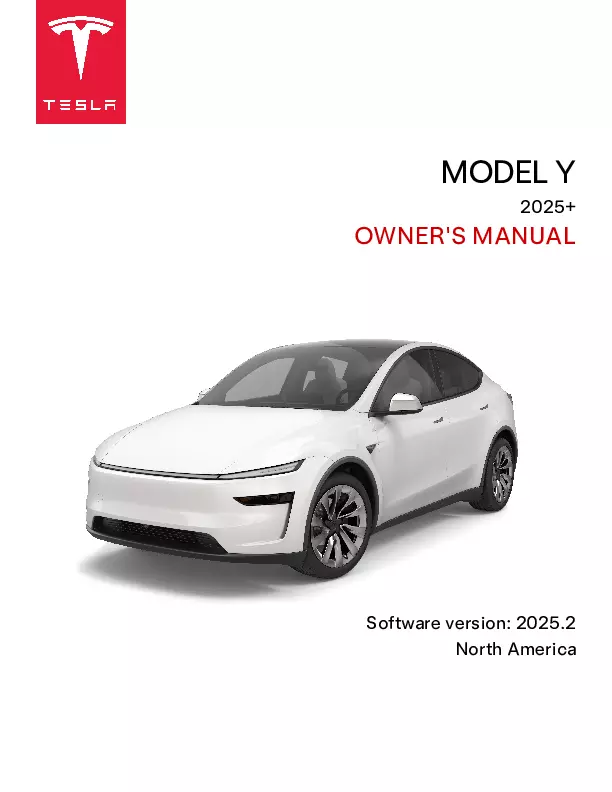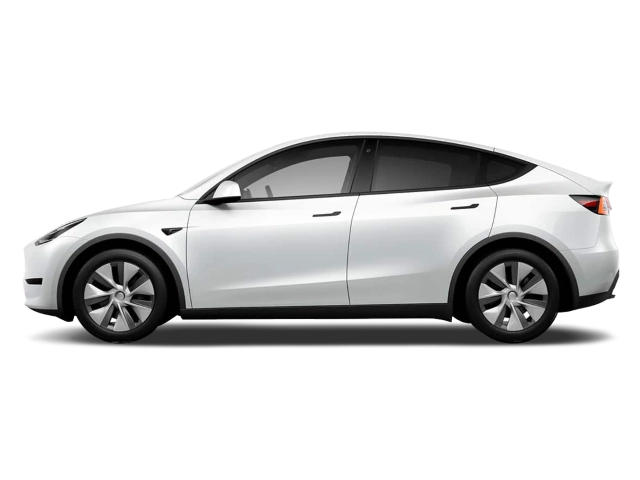2025 Tesla Model Y Owner's Manual

Table of Contents
2025 Tesla Model Y Overview
Owner's Manual
The Owner's Manual for the 2025 Tesla Model Y serves as an essential guide for new and seasoned Tesla owners alike. It provides comprehensive information regarding the vehicle's operation, technical specifications, and maintenance requirements. This manual is designed to empower owners to utilize the Model Y to its fullest potential, ensuring a smooth and fulfilling driving experience. From basic features to advanced technologies, the manual covers everything you need to know, including safety procedures and troubleshooting tips. Regular reference to the manual will enhance your understanding and appreciation of the vehicle's capabilities.
Introduction
The 2025 Tesla Model Y is an innovative crossover that seamlessly blends performance, utility, and eco-friendliness. As a part of Tesla’s commitment to sustainability, the Model Y offers an all-electric driving experience without compromising on style or comfort. With its spacious interior, advanced technology, and impressive range, this vehicle is perfect for families and adventurers alike. The Model Y stands out with its sleek design and robust functionality, making it an exceptional choice in the increasingly competitive electric vehicle market.
Powertrains
The 2025 Tesla Model Y offers a range of powerful and efficient powertrains to suit diverse driving needs. Owners can choose from a dual-motor all-wheel drive setup that delivers remarkable acceleration and handling in various conditions. For those seeking longer range, the Long Range variant provides an impressive mileage on a single charge, ensuring less time at charging stations and more time on the road. With Tesla's cutting-edge battery technology, the Model Y boasts enhanced performance while minimizing environmental impact.
Trims
The 2025 Model Y comes in several trims designed to cater to a variety of preferences and budgets. The base model offers a great balance of features and performance, while the Long Range option adds extra range for those who desire freedom in driving distance. The Performance trim takes agility and excitement to the next level, providing a sportier chassis and faster acceleration for enthusiasts. Each trim level is thoughtfully equipped, allowing buyers to choose according to their individual driving habits and lifestyle requirements.
Features
The 2025 Tesla Model Y is loaded with cutting-edge features designed to enhance comfort, convenience, and safety. The minimalist interior is equipped with a large touchscreen that controls most functions, offering intuitive access to navigation, entertainment, and climate settings. Additionally, advanced safety systems, including Autopilot capabilities, provide peace of mind while on the road. Options like premium audio systems, panoramic sunroof, and spacious cargo configurations further elevate the driving experience, making the Model Y a versatile choice for modern families.
User manual download
The Tesla Model Y owner manual for the 2025 model year is to be found in PDF downloadable format on this page. The owner manual for the model year 2025 is free and in English, but the repair manuals are usually not easy to get and may cost more.
Manual Questions
Fill the form below and someone will help you!

